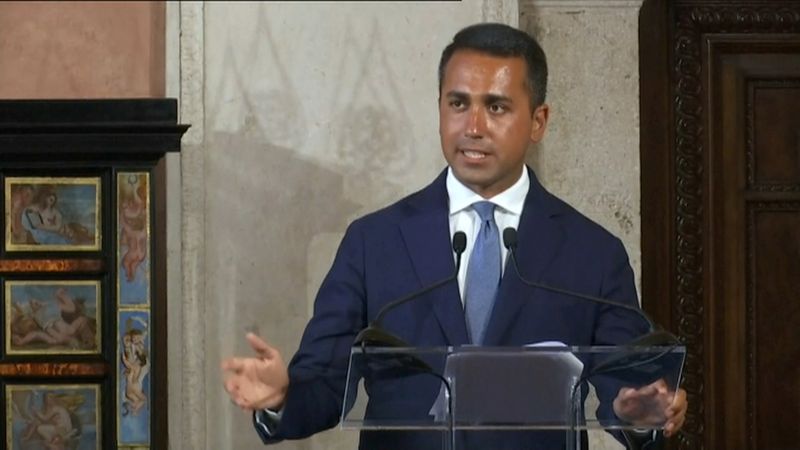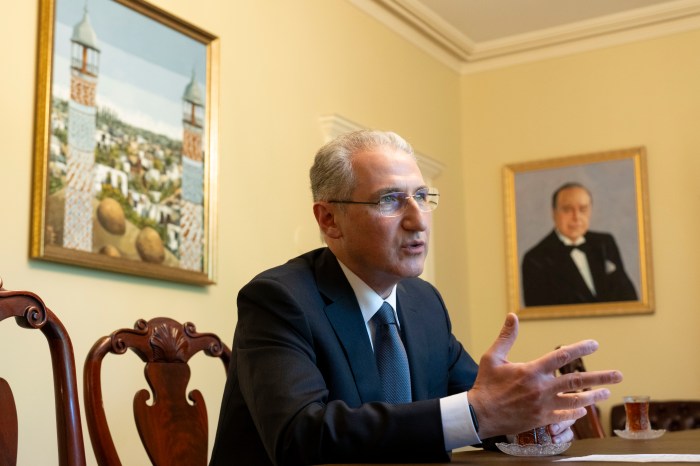ROME (Reuters) – For Foreign Minister Luigi Di Maio it was a bit of harmless, social media fun, for others it highlighted what some say is a national blindness to insidious racism lurking just under the skin of predominantly white Italy.
When Di Maio appeared last week sporting a strikingly deep sun tan, a wave of memes hit the internet showing his face superimposed onto the bodies of prominent Black figures.
At a time when the Black Lives Matter mantra is resonating across much of the world, such imagery would be viewed as an anathema in many countries. But rather than condemn the posts, Di Maio made them his own by putting a selection on Facebook.
One of the pictures showed him as U.S. basketball great Michael Jordan, another placed his face over that of one of Bill Cosby’s children in the U.S. sitcom “The Cosby Show”, in what was seen as Di Maio adopting a digitized form of Blackface.
“Guys. I promise that next summer I’ll wear factor 50 suntan cream. And thank you for making my day lighter,” Di Maio wrote, ending his post with an emoji of a laughing face.
It wasn’t a laughing matter for everyone.
“What is funny about the color of my skin?” said Igiaba Scego, an Italian-Somali author who lives in Rome. “This came from the foreign minister. He should be setting an example. Instead he minimized something that is clearly racist.”
Traditionally a nation of emigrants, Italy has only become a major destination for immigrants since the start of the 21st century and there has been relatively little debate here over the country’s colonial past, racism or integration.
Blackface began in New York vaudeville shows in the 1830s, when slavery was still legal in the U.S. South, and featured white performers who darkened their faces to caricature blacks on plantations as lazy and stupid. Its usage today in the English-speaking world is synonymous with racism.
A chastened Canadian Prime Minister Justin Trudeau had to fight for his political life last year after pictures emerged of him with his face blackened at a 2001 fancy dress party.
While Di Maio, a 32-year-old leader of the anti-establishment 5-Star Movement, did not physically blacken his face, critics like Scego said the digital imagery was pungent.
Tellingly, in a nation renown for its ruthless politics, Di Maio’s many rivals did not look to capitalize on the post. On the contrary, one of his fiercest foes – the conservative daily Il Giornale – defended him from accusations of racism.
“It seems incredible to write it here, but if we have to choose between the innocent freedom to joke about a tan and the Orwellian totalitarianism of stupid censors in search of imaginary racism, then we back Di Maio,” the paper said in a front page editorial on Saturday.
Contacted by Reuters, Di Maio did not respond to a request for comment on the issue.
MUSSOLINI MONUMENTS
Rights activist Tareke Brhane, an Italian citizen originally from Eritrea, said such “jokes” were commonplace here. “You are discriminated because of your skin color. You have to deal with this for the rest of your life,” he said.
Unlike other European countries, Italy remains an overwhelmingly white, Roman Catholic country.
Just 8.8% of Italy’s 60 million registered residents are foreigners and of these, less than half a million come from sub-Saharan Africa. Latest estimates suggest there are also some 560,000 migrants without official papers living here, kept on the margins of society by their inability to join the workforce.
Such numbers might go some way to explain a generalized lack of sensitivity around race issues.
While the killing of George Floyd by a U.S. policeman in May triggered large demonstrations around the world in support of the Black Lives Matter cause, the response in Italy was muted.
The movement also led to a renewed focus on Europe’s colonial abuses, especially in Britain and Belgium where the statues of some historical figures were toppled.
In Italy, students threw red paint over the statue of a journalist, Indro Montanelli, who once admitted, without any remorse, that he had bought a 12-year-old Eritrean girl as a wife during Italy’s colonial rule there in the 1930s.
But monuments built to honor one of the country’s most enthusiastic colonialists, fascist leader Benito Mussolini, remain unscathed.
Historian Francesco Perfetti, a professor at Luiss University in Rome, says the push for colonialism started late in Italy compared with other European nations and left little impact on the nation’s psyche.
“In the mind of the Italians there is not even the perception of having been a colonial state,” he told Reuters.
As a country which saw millions of its citizens emigrate in the 19th and 20th centuries in search of a better life, Perfetti believes Italians are more tolerant of migrants than elsewhere.
“The Italian nature is not racist while in American history it is an endemic, profound phenomenon,” he said.
Scego, who was born in Rome in 1974, says Italians need to be taught about the crimes the country committed in Ethiopia, Somalia, Libya and Eritrea, and be made more aware of the importance of integration.
“Much work still needs to be done here,” she said. “It is a strange country. I love it, but it needs to move forward and see what is happening in the rest of the world.”
(Writing by Crispian Balmer; Editing by Giles Elgood)



















